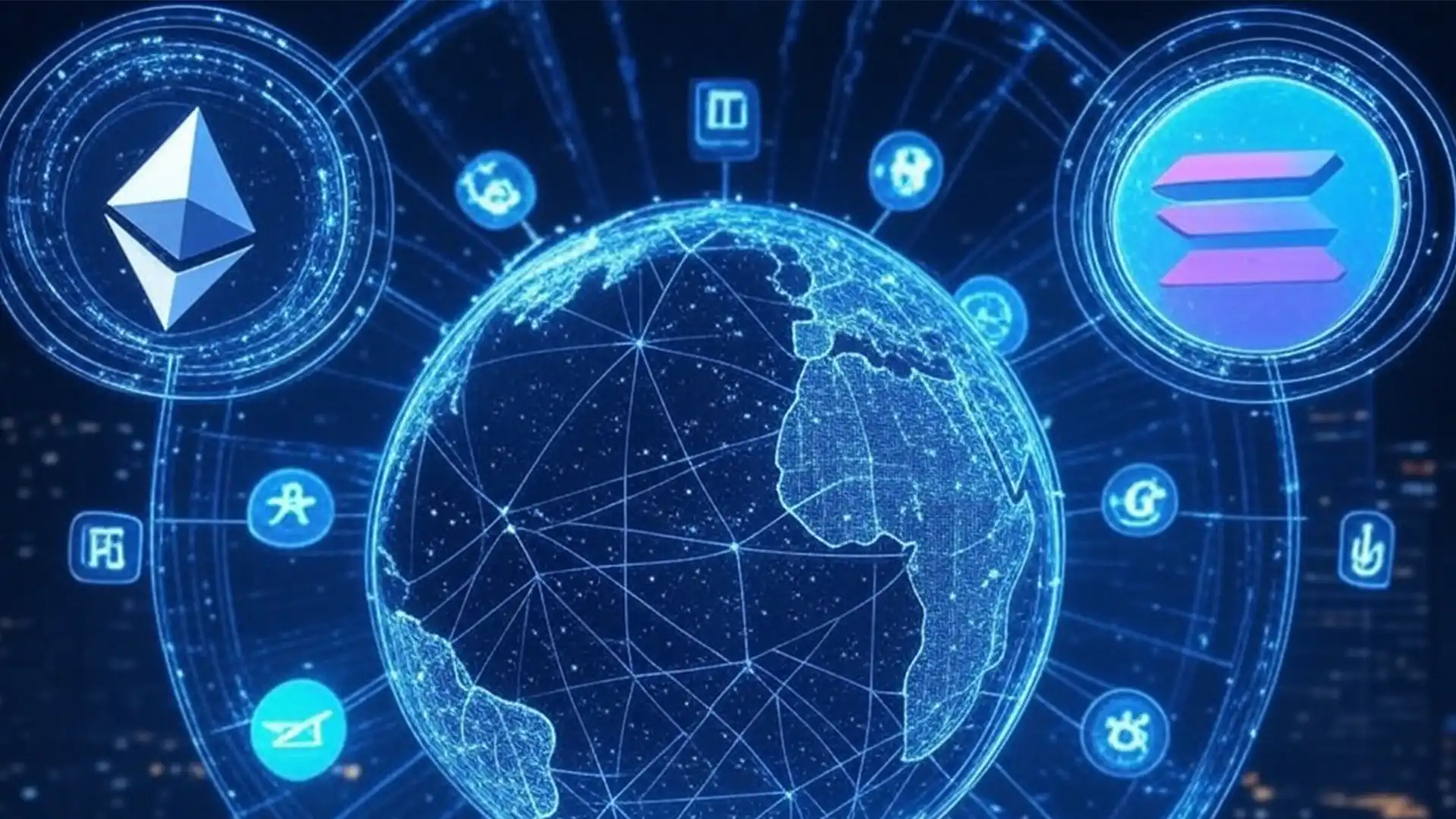Stablecoins and Their Purpose: Bridging Traditional and Crypto Finance

What Are Stablecoins?
Key Characteristics of Stablecoins
- Price Stability: Designed to maintain a consistent value, typically $1 USD
- Blockchain-Based: Built on blockchain technology for transparency and programmability
- Digital Transferability: Can be sent globally without traditional banking intermediaries
- Programmable Money: Compatible with smart contracts and decentralized applications
- Round-the-Clock Operation: Available for transactions 24/7, unlike traditional banking systems
Types of Stablecoins: Different Approaches to Stability
1. Fiat-Collateralized Stablecoins
- The issuer holds reserves in traditional currency (usually USD)
- Each stablecoin is backed by an equivalent amount of the reserve currency
- Users can typically redeem their stablecoins for the underlying fiat currency
- USD Coin (USDC): Backed by regulated financial institutions with regular attestations
- Tether (USDT): The largest stablecoin by market capitalization
- Binance USD (BUSD): Issued by Binance in partnership with Paxos
- TrueUSD (TUSD): Emphasizes regular audits and legal protections
- Straightforward model that’s easy to understand
- Relatively stable with minimal price fluctuation
- Often regulated and audited
- Requires trust in the centralized entity holding reserves
- Counterparty risk if the issuer mismanages funds
- Subject to traditional banking limitations and regulations
2. Crypto-Collateralized Stablecoins
- Users lock up cryptocurrency assets in a smart contract
- The system issues stablecoins at a lower value than the collateral (e.g., $150 of ETH might back $100 of stablecoins)
- Automatic liquidation mechanisms maintain the collateralization ratio if collateral values drop
- DAI: Created by MakerDAO, primarily collateralized by ETH and other cryptocurrencies
- Liquity (LUSD): Backed exclusively by ETH with a minimum collateralization ratio of 110%
- sUSD: Synthetix’s stablecoin, backed by the SNX token
- More decentralized than fiat-backed alternatives
- Transparent operations visible on-chain
- No need to trust a centralized custodian
- Complex mechanisms may be difficult for new users to understand
- Requires over-collateralization, which is capital inefficient
- Vulnerable to extreme market volatility in the underlying collateral
3. Algorithmic Stablecoins
- Smart contracts automatically expand or contract the stablecoin supply based on demand
- When price exceeds the peg, new coins are created to increase supply and reduce price
- When price falls below the peg, the system incentivizes reducing supply
- Frax (FRAX): Pioneering fractional-algorithmic model combining collateral and algorithms
- Ampleforth (AMPL): Uses supply rebasing to adjust everyone’s balances
- Empty Set Dollar (ESD): Utilizes bond and coupon systems for stability
- Potentially more capital efficient
- Highly decentralized operations
- Innovative economic models
- Higher risk of failure or "death spirals"
- Historically less stable than collateralized alternatives
- Complex incentive structures
4. Hybrid Stablecoins
- Incorporate elements from different stability mechanisms
- Often use partial collateralization with algorithmic components
- May include governance tokens that absorb volatility
- FRAX: Partially collateralized with algorithmic elements
- Reserve (RSV): Uses a basket of assets with algorithmic governance
- Neutrino USD (USDN): Algorithmically stabilized and Waves-backed
- Greater flexibility in design
- Can balance decentralization with stability
- Adaptable to market conditions
- Complex interactions between different mechanisms
- Potential for unforeseen system risks
- May be difficult for users to fully understand
Critical Functions of Stablecoins in the Crypto Ecosystem
Trading and Exchange Utility
- Trading Pairs: Most crypto exchanges offer trading pairs with stablecoins
- Volatility Hedge: Traders can quickly move from volatile assets to stablecoins without exiting the crypto ecosystem
- 24/7 Trading: Unlike bank transfers, stablecoin transactions operate continuously
- Quick Settlement: Faster than traditional banking systems for moving value between exchanges
Decentralized Finance (DeFi) Applications
- Lending and Borrowing: Most DeFi lending platforms use stablecoins as the primary currency
- Liquidity Provision: Stablecoins provide essential liquidity for trading pools
- Yield Generation: Users can earn interest by lending stablecoins or providing liquidity
- Risk Management: Allow users to maintain stable value while participating in DeFi
Cross-Border Payments and Remittances
- Reduced Fees: Lower costs compared to traditional remittance services
- Faster Settlement: Near-instant transfers versus days for bank wires
- Accessibility: Available to anyone with internet access, including the unbanked
- Consistent Value: Recipients receive a predictable amount without exchange rate surprises
Smart Contract Functionality
- Automated Payments: Scheduled or condition-based transfers through smart contracts
- Escrow Services: Secure holding of funds until conditions are met
- Decentralized Applications: Stable unit of account for blockchain-based services
- Tokenized Assets: Foundation for representing real-world assets on-chain
Regulatory Landscape and Challenges
Current Regulatory Approaches
- United States: Increased scrutiny with calls for bank-like regulations for issuers
- European Union: Developing comprehensive frameworks under MiCA legislation
- Singapore: Requiring licenses for stablecoin issuers above certain thresholds
- United Kingdom: Proposing to bring stablecoins into existing payment regulations
Key Regulatory Concerns
- Reserve Verification: Ensuring adequate and appropriate backing assets
- Consumer Protection: Safeguarding users from potential insolvency
- Monetary Policy Impact: Potential effects on central bank operations
- Financial Stability: Systemic risks from widespread adoption
- Anti-Money Laundering: Compliance with AML/KYC requirements
Risks and Considerations
Centralization Risks
- Single Points of Failure: Centralized issuers may represent systemic risks
- Blacklisting Capability: Some issuers can freeze funds or block addresses
- Reserve Management: Questions about the quality and liquidity of backing assets
Technical Vulnerabilities
- Smart Contract Risks: Potential exploits in underlying code
- Oracle Failures: Price feed inaccuracies affecting collateralized systems
- Network Congestion: Transaction delays during high-demand periods
Market Risks
- De-pegging Events: Periods when stablecoins trade above or below their intended value
- Bank Run Scenarios: Mass redemptions straining reserve systems
- Collateral Liquidations: Cascading failures in crypto-collateralized systems
The Future of Stablecoins
Central Bank Digital Currencies (CBDCs) and Stablecoins
- Competitive Landscape: How private stablecoins will compete with government-issued digital currencies
- Potential Regulation: CBDCs may influence stablecoin regulatory frameworks
- Coexistence Models: How CBDCs and stablecoins might operate in parallel
Technological Innovations
- Cross-Chain Functionality: Stablecoins operating across multiple blockchains
- Privacy Features: Enhanced confidentiality while maintaining compliance
- Scalability Solutions: Integration with layer-2 networks for reduced fees and faster transactions
Expanding Use Cases
- Real-World Asset Representation: Connection to traditional financial instruments
- Global Financial Inclusion: Reaching underbanked populations
- Mainstream Payment Integration: Adoption by traditional payment processors and merchants
Choosing the Right Stablecoin
- Transparency: Regular audits and clear reserve reporting
- Liquidity: Trading volume and availability across exchanges
- Regulatory Compliance: Legal status in relevant jurisdictions
- Technical Security: Track record of maintaining the peg and security
- Transaction Costs: Fees for transfers and conversions
- Decentralization Level: Importance of censorship resistance vs. stability
Conclusion
Stablecoins represent one of the most significant innovations in the cryptocurrency space, addressing the critical challenge of volatility while retaining the benefits of blockchain technology. By bridging traditional finance and the crypto ecosystem, they enable a wide range of applications from simple value transfers to complex decentralized finance protocols. As the ecosystem continues to mature, stablecoins will likely play an increasingly important role in both crypto markets and potentially the broader financial system. Understanding the different types of stablecoins, their mechanisms, benefits, and risks provides essential context for anyone looking to navigate the evolving landscape of digital assets. Whether you’re a trader seeking refuge from market volatility, a DeFi participant looking for a reliable unit of account, or simply interested in faster and cheaper international transfers, stablecoins offer compelling solutions that combine the best elements of traditional and cryptocurrency financial systems.


